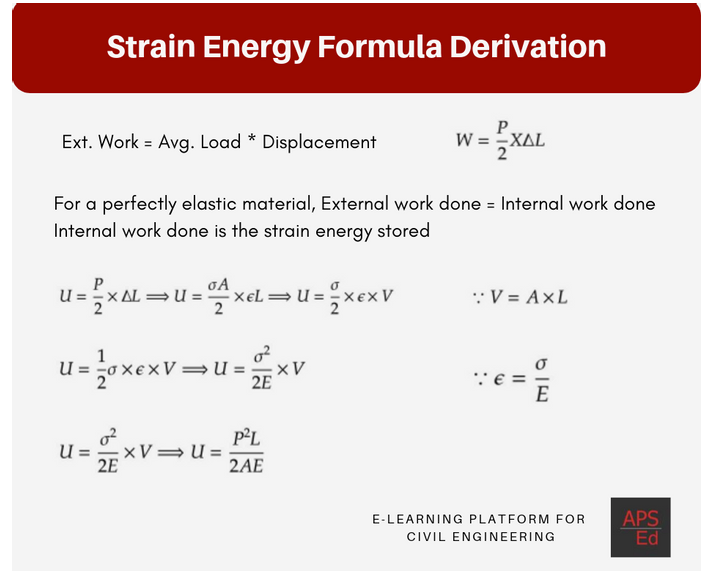Strain Energy | Overview and Formula Derivation
- APSEd
- Apr 28, 2021
- 2 min read
What is Strain energy?
Strain Energy is defined as the internal work done to deform a body by the action of externally applied forces.
Let’s say we have an axially loaded bar on which load is applied gradually which increases from 0 to P and due to this load the length of the bar increases by ΔL. The external work done by the applied load will be given as:
External work, W = Average load x Displacement = P/2 x ΔL
Why are we interested in strain energy?
The elastic body has a property - it can store this energy when some external force is applied and this energy can be recovered when this external force is removed - so this energy becomes usable to us.
Strain Energy Formula Derivation

If we assume that there is no energy loss or in other words, if this is a perfectly elastic body then we can say this external work done is equal to internal work done.
For a perfectly elastic material, External work done = Internal work done
According to the definition, internal work done is the strain energy stored.
Strain energy = P/2 x ΔL = 𝜎A/2 x 𝜖 x L = 𝜎/2 × 𝜖 × V = 𝜎/2 × 𝜎/E × V = 𝜎2/2E×V
For unit volume, strain energy U = 𝜎2/2E = P2L/2AE
From the above formula, we can see that strain energy/volume is directly proportional to the square of stress applied and inversely proportional to the modulus of elasticity of a material.
The SI unit of strain energy is Joules/m3.
Now watch this video to visually understand the concept of strain energy and other concepts more clearly.
This is all for now. Let me know by commenting, what all you want next.

EPTU Machine ETPU Moulding…
EPTU Machine ETPU Moulding…
EPTU Machine ETPU Moulding…
EPTU Machine ETPU Moulding…
EPTU Machine ETPU Moulding…
EPS Machine EPS Block…
EPS Machine EPS Block…
EPS Machine EPS Block…
AEON MINING AEON MINING
AEON MINING AEON MINING
KSD Miner KSD Miner
KSD Miner KSD Miner
BCH Miner BCH Miner
BCH Miner BCH Miner